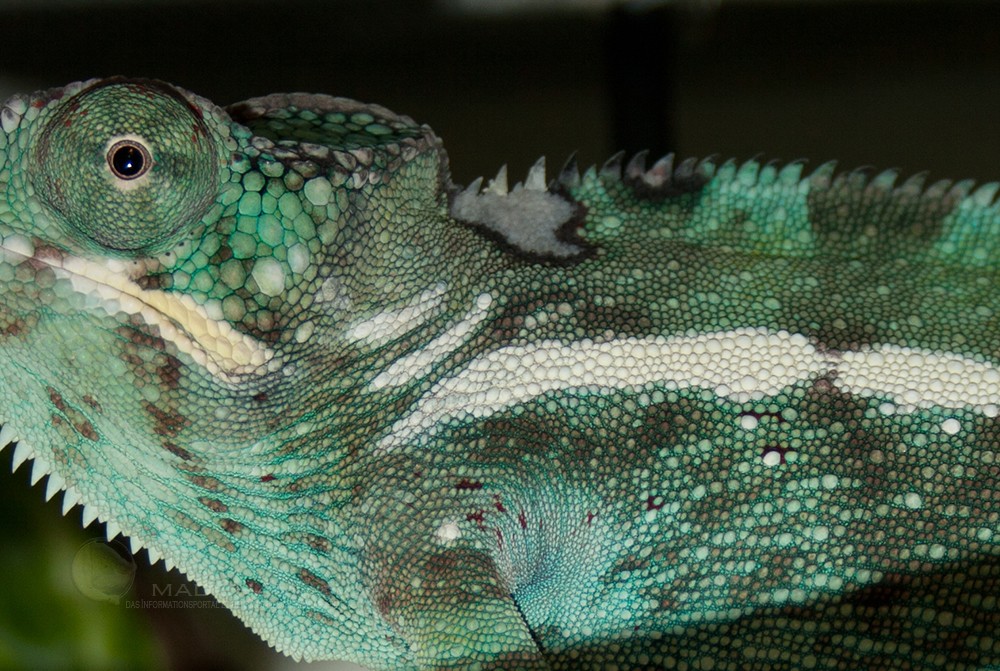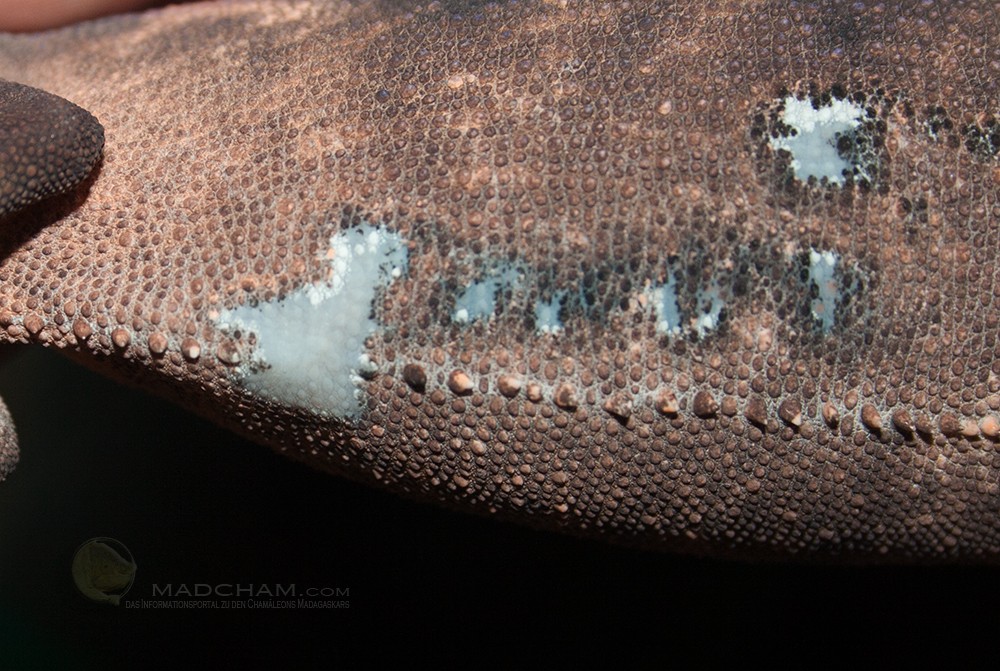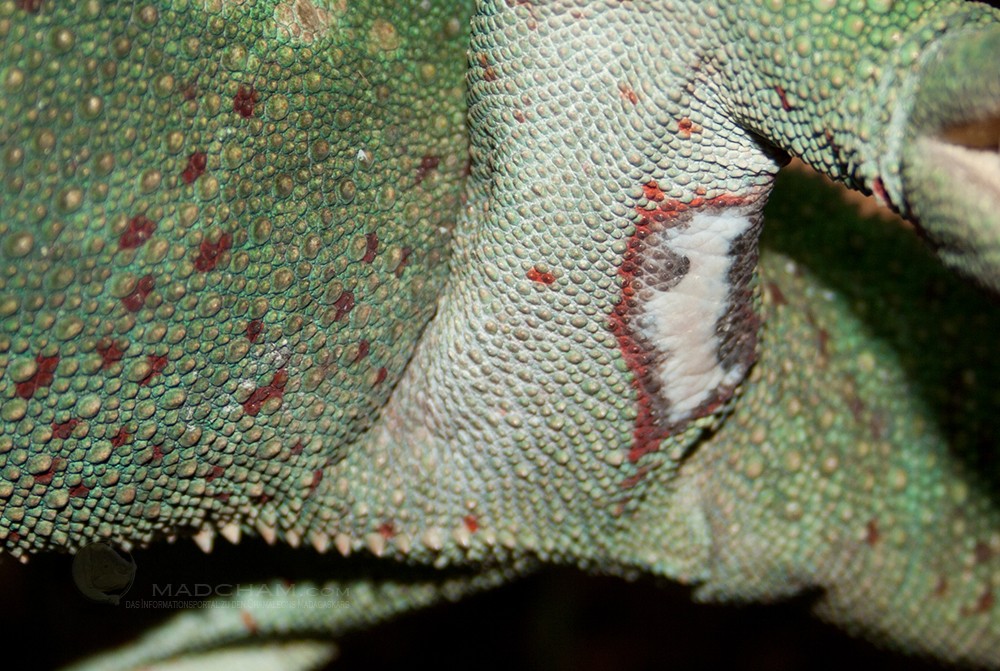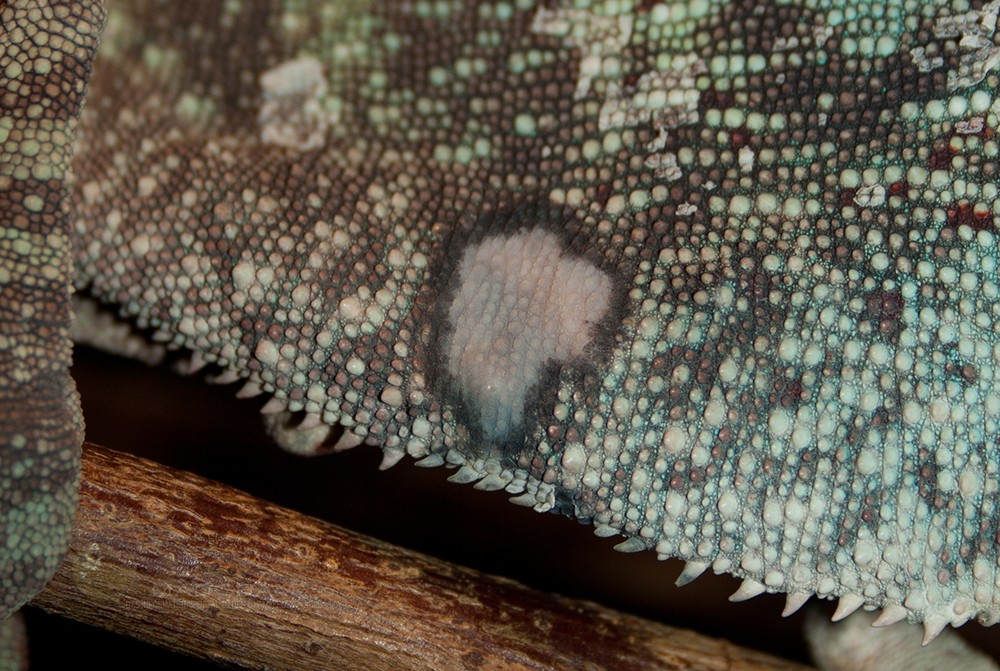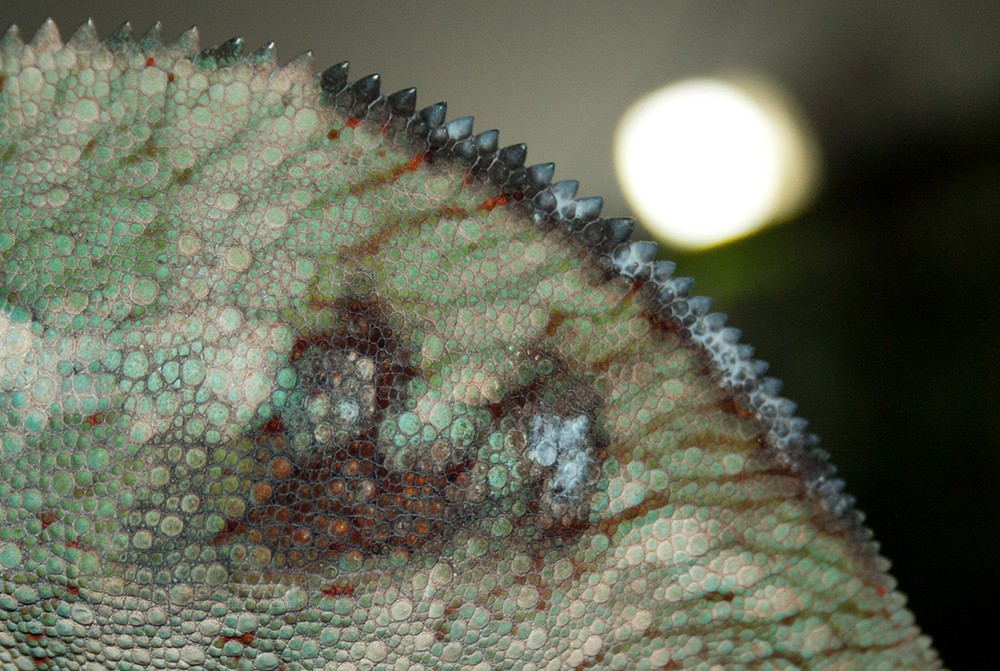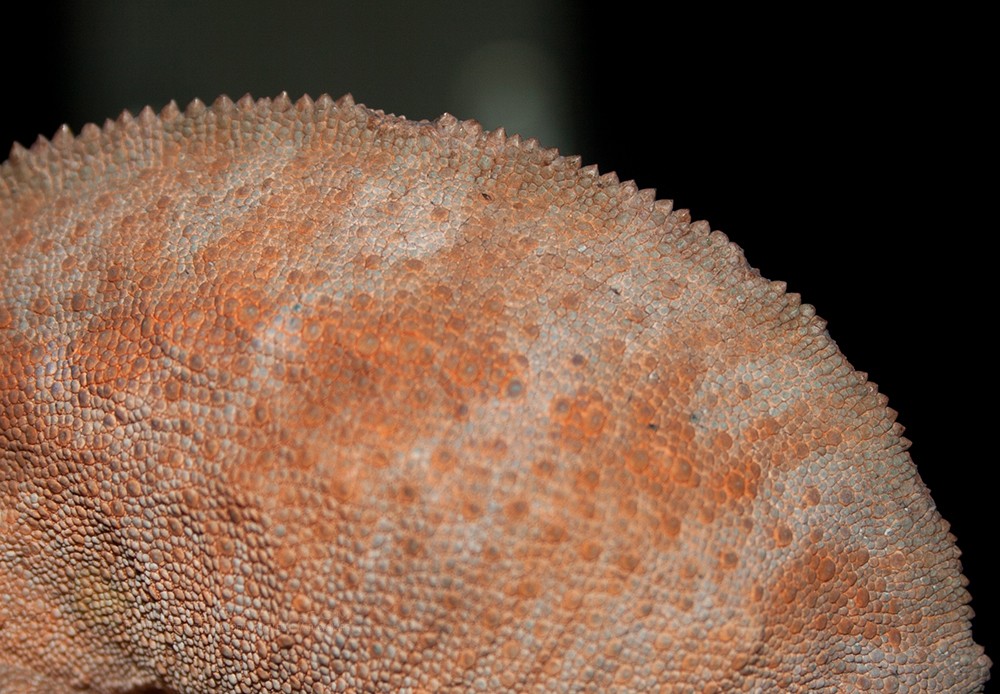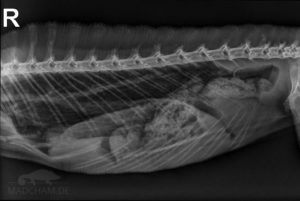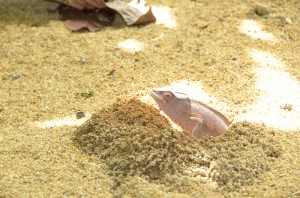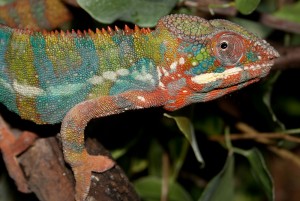Burnings are among the most frequent injuries of chameleons in captivity. Usually, they are a consequence of poor husbandry. Typical areas for burnings in chameleons are the dorsal crest, upper arms, thighs and the belly.
How does burning occur?
A burning is a damage of the skin through high heat exposure or short-waved UVB rays. Both damages skin tissue which leads to a locally limited inflammation. As long as nerve endings are not burned, too, the arising wound is very painful for the chameleon. First, the affected skin tissue changes in colour to black. If deeper skin layers have been destroyed, the body wants to get rid of the affected tissue – it will fall off after some time and leaves a shimmering pink or almost white scar tissue that is rather sensitive to pressure.
Why do chameleons not notice the development of a burning?
In the wilderness, chameleons do not get burnings through the sun. But in captivity, we need to compensate for the lack of sun with artificial bulbs imitating daylight and especially UVB rays. Those bulbs cannot imitate natural sunlight completely, sometimes emit very short-waved (harmful) UVB rays, focus radiation enormously on one point or reproduce light spectra in other proportions than the natural sun. A chameleon always looks for the brightest and warmest place to take a sunbath, in the wilderness, and in captivity – and it goes as close as it can. Like a sunburn in us humans, the chameleon does not notice that it hurts itself while sunbathing. And its body is not made to notice it since it simply does not happen in the wilderness! Often, the cage also lacks a temperature gradient and warm, but shady places. So many chameleons simply stay way too long on the only really warm place of the cage.
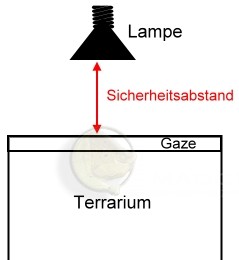
The safety distance has to be measured from the bulb to the cage top, NOT to the chameleon’s “sunbathing place”
Poor husbandry as a cause
- Having bulbs inside the cage: Bulbs for chameleon cages should never be inside the cage itself, but always separated by a mesh that is the top of the cage. Chameleons are resourceful and love to climb – please do not underestimate their abilities to reach even the most allegedly unattainable places of the cage. Sooner or later, a chameleon will always get to any bulb that is inside its cage. Even so-called basking cages offer no sufficient protection. Remember: Chameleons always look for the brightest and warmest place to warm up and do not spare hot bulbs.
- Bulbs too close to the cage top:
Even bulbs mounted outside of the cage can be causes of burnings. Some UVB bulbs need a certain safety distance (e.g. Lucky Reptile BrightSun 70 W at least 30 cm, Osram Vitalux 300 W at least 80 cm). This safety distance should be measured from the top of the cage to the undermost part of the bulb. Chameleons, especially young ones, may climb upside-down under the cage top, which produces typical belly burnings when bulbs are mounted too close above the top. - Wrong bulbs:
Some bulbs you can buy in pet shops are generally not suitable for chameleon cages (e.g. compact lamps) since they oven emit too short-wave UVB radiation.
Consequences
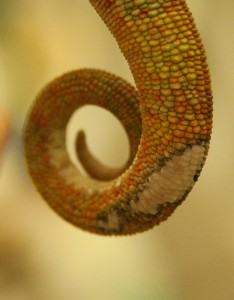
Old burn on a panther chameleon’s tail
Healed burnings leave scars that will remain visible for years. Destroyed parts of the dorsal crest or helmet do not grow again. Skin tissue that dies off, e.g. on the tail tip, is prone to bacterial infections which may lead to ongoing ugly wounds that become larger and larger. Severe burns that affect a major part of the body may even lead to shock and thus circulatory collapse, similar to severe frostbite.
Therapy
A chameleon with a fresh burning injury should be brought to a reptile veterinarian. The vet will have a close look at the wound and begin an adequate treatment. Depending on the severity of the burning, eventually, your vet needs to remove dead tissue, refresh the wound, or treat an already existing infection. Untreated burnings provide an entrance site for bacteria and fungus, which find a perfect breeding ground in the destroyed skin tissue and then can spread to healthy skin, too.
Please do not smear any creams, oils, vaseline, chamomile tea or anything else on the wounds! This retards healing and in the worst case, can irritate the wound or make it more prone to infections.

